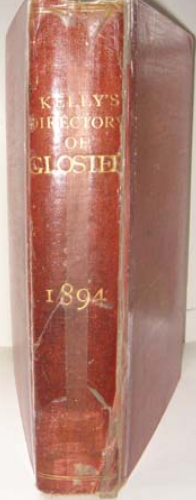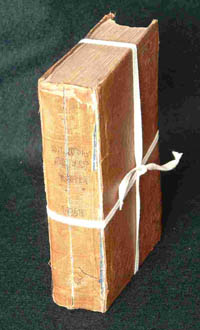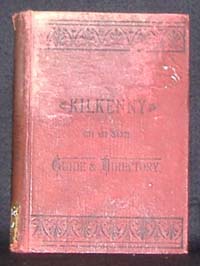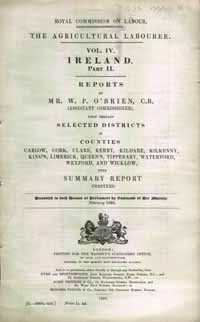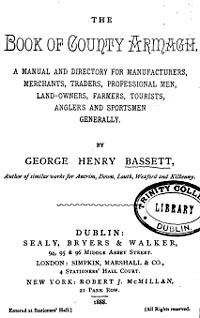Kelly’s Directory of Gloucestershire 1894
What is inside?
Republished here digitally is Kelly's Directory of Gloucestershire, which was published in 1894. Containing some 616 printed pages, Kelly's Directory, as the then editor, A. Lindsay Kelly correctly noted, was primarily a directory, but also served as the gazetteer for every county for which Kelly's Directory was published, and this Gloucestershire edition is no exception. This directory, published with a revised map, includes every parish in the county and provides a thorough topographical description of every town, parish, village and township, describing the principal buildings and geographical objects of interest in each. Great care is also taken in Kelly's treatment of the ecclesiastical divisions of the county with descriptions of all the churches, cathedrals the value of the livings, parochial incumbents and patrons. The same level of detail is provided for the civil and local administration of the county with full information on county courts, districts fairs, markets, county hunts as well as communications such as rail and post throughout the county. Beginning with Abinghall and ending with Yate, for those who might be unfamiliar with a directory such as Kelly's the degree of information contained on each village can be gleaned from the description of just one of the places entered in the Towns and Villages section of the directory.
Iron Acton is described as a parish and village situated on the river Laden, on the Thonbury branch of the Midland railway and road from Bristol to Stroud; bounded by the river Frome its is situated in the Southern Division of the county, within the Grumbalds Ash and Thornbury Hundreds, the rural deanery of Bitton, archdeaconry of Bristol and diocese of Bristol and Gloucester. The parish Church of St. James is described in some detail, as is its clock, bells, number of sittings and graveyard. The parochial records for St. James date from 1570, the living of which is a rectory with an annual value of £640, including 60 acres of glebe, the gift of Christ Church, Oxford. The village also contained Wesleyan and Congregational Chapels. Fairs were held bi-annually on 25th April and 13th September, principally for the sale of cattle, horses, sheep and pigs. The name of Iron Acton is thought to have derived from an ancient oak tree that stood until 1828 in the grounds of Acton House and the iron ore that was mined locally, the village originally being known as Iron Oak Town. The Lady of the Manor was recorded as Miss Castle, the soil of the parish clayey with a subsoil of coal and limestone. The principal crops of the parish were wheat, barley and roots. The population of the parish in 1891 was 1,034 with an area of 2,944 acres. The entry for Iron Acton is concluded by a list of the principal private residents and business in the parish and also those found in the villages of Latteridge and Acton Ilgar. While Iron Acton was a relatively small hamlet within the county of Gloucestershire as a whole, the level of detail recorded here is typical throughout the directory.
This edition of Kelly's Directory of Gloucestershire is prefaced by a topographical and geological description of the county and is concluded with an extensive alphabetical list of the county's chief residents and commercial interests, which could be found across the length and breadth of the county in 1894. In addition to these expected but key features of any useful directory this edition also includes some 64 pages of full and half-page advertisements, many containing useful sketches and photographs from the period. For anyone with even the slightest interest in the residents, topography of descriptions of the county of Gloucestershire this fully-searchable 1894 edition of Kelly's Directory of Gloucestershire is heartily recommended.
This title is a DOWNLOAD.
Research Store.
Browse our range of products that can help trace your family ancestry and learn the story of your families history and past.
